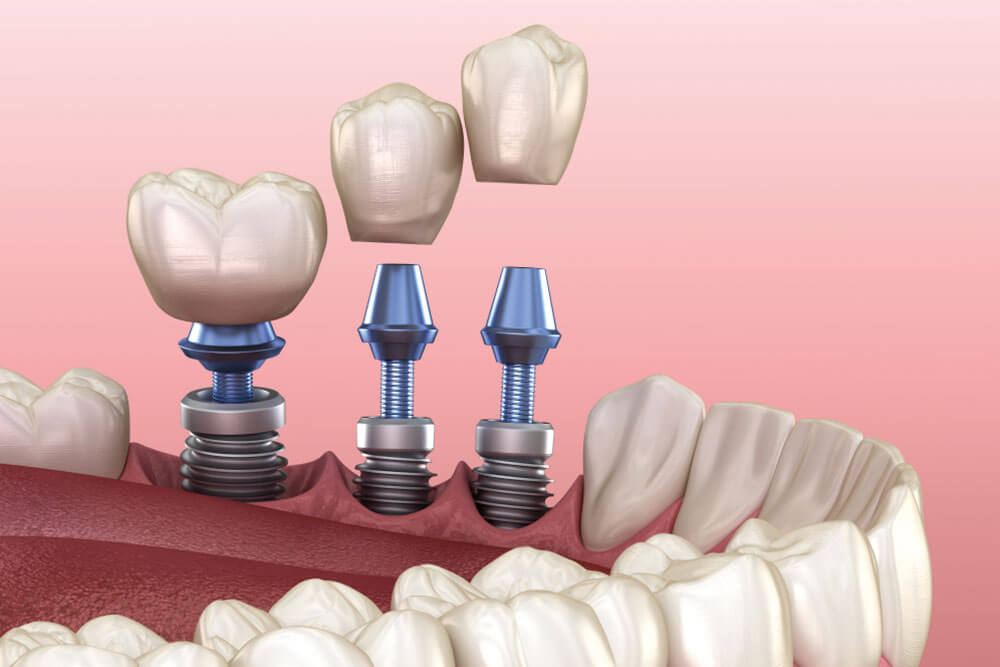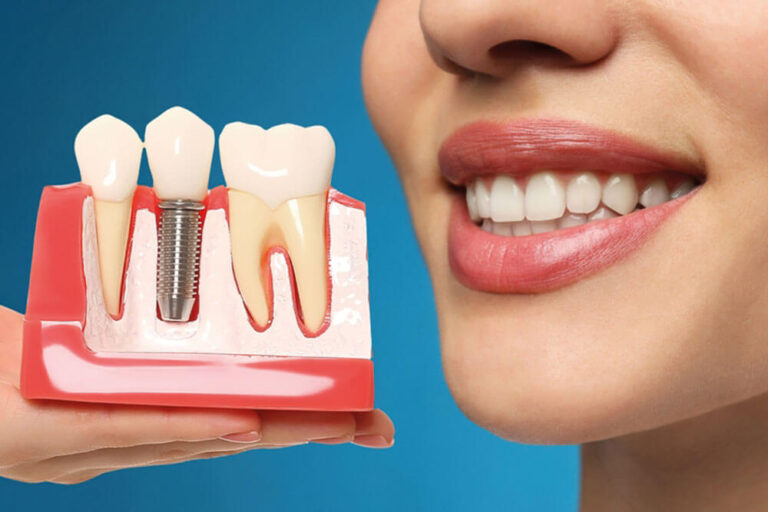Dental implants are a modern solution for replacing missing teeth, offering a permanent and aesthetically pleasing alternative to traditional dentures or bridges. At Total Freedom Dental Implant Center in Scottsdale, we specialize in providing top-notch dental prosthodontics, ensuring that your dental implants look natural and offer unparalleled functionality.
Symptoms
If you’re dealing with any of the following dental issues, you might be an ideal candidate for dental implants:
- Missing one or more teeth
- Loose-fitting dentures or bridges
- Bite problems or pain due to missing teeth
- Chewing difficulties and speech issues
- Jawbone recession resulting from tooth loss
Why Are Dental Implants Needed?
The absence of natural teeth leads to a multitude of problems:
- Aesthetic Concerns: Missing teeth can impact your smile and facial structure.
- Functional Issues: Eating and speaking can become challenging.
- Bone Loss: The jawbone may begin to deteriorate in the absence of tooth roots, which can alter facial features over time.
- Adjacent Teeth: Surrounding teeth may shift, leading to bite problems or misalignment.
Dental implants address these concerns, acting as a substitute for the missing tooth’s root, thereby preserving the jawbone and preventing its deterioration.
Treatment Process
Your journey to a renewed smile with dental implants involves:
Consultation & Planning:
- Discuss your needs and evaluate if dental implants are right for you.
- X-rays and 3D imaging may be conducted to assess bone quality and determine implant positioning.
Implant Placement:
- Under local anesthesia, the doctor inserts the implant into the jawbone.
- The site is then allowed to heal. Depending on individual cases, this can range from a few weeks to a few months.
Abutment & Crown Placement:
- Once healed, an abutment is attached to the implant.
- A custom-made crown, matching your natural teeth, is then placed over the abutment.
Safeguarding Your Dental Investment
To ensure the longevity of your dental implants, it’s paramount to prioritize good oral hygiene practices. Regular brushing and flossing, complemented by routine dental check-ups, form the foundation of implant care. Additionally, avoiding chewing on hard foods or items that can damage the crown is wise. Equally crucial is refraining from smoking, as it can compromise bone structure, thereby jeopardizing the stability and health of the implant.
Anticipating a Brighter Dental Future
Dental implants have a high success rate and can last a lifetime with proper care. They provide a strong foundation for fixed or removable replacement teeth, ensuring a more natural tooth function and appearance. Furthermore, as they are designed to fuse with the bone, they become a permanent part of your jaw, eliminating many of the discomforts associated with traditional solutions.
Frequently Asked Questions
Are dental implants a permanent solution for missing teeth?
Yes, dental implants are designed to be a long-lasting solution for missing teeth. With proper care, they can last a lifetime, offering both aesthetic appeal and functional utility similar to natural teeth.
How do dental implants prevent jawbone loss?
Dental implants act as a substitute for the root of the missing tooth. This helps in preserving and stimulating the jawbone, preventing the bone loss that typically occurs after losing natural teeth.
Can smokers get dental implants at the Total Freedom Dental Implant Center?
While dental implants can be placed in smokers, it’s important to note that smoking can weaken the bone structure and interfere with the healing process post-surgery. Discussing your habits with our doctor during the consultation is recommended to assess the best course of action for your oral health.
Take the Next Step Toward a Perfect Smile
Eager to restore your radiant smile? Don’t hesitate any longer. Reach out to Total Freedom Dental Implant Center at (480) 860-9002 and discover the transformative potential of dental implants. Your journey to a confident, beautiful smile begins with a call!
People travel from all over the country to Arizona for consultations and treatment with Dr. Kaiser. It’s unquestionably worth the trip. Whether you’re seeking a first or second opinion, or even if you decide to choose another dental provider, a consultation with Dr. Kaiser will provide you with invaluable insights into your unique dental situation and the available options. You won’t be disappointed.
Dental implants are surgical-grade root devices that support permanent tooth prosthetics that are manufactured to last a lifetime. These artificial roots are anchored in the bone beneath the gums where they become fused into the jaw. A crown is mounted atop the implant for a long-lasting and natural looking smile. Many dentists and patients prefer dental implants because they offer the same function as natural teeth and also help prevent bone atrophy in the jaw. Dental implants may be used to replace a single missing or damaged tooth or to restore an entire smile.
Did you know…
that approximately 30 million people live with no natural teeth in one or both jaws? But more and more dental patients are opting for dental implants as a means of tooth replacement. The American Academy of Implant Dentistry reports that 3 million people currently have dental implants – a number that is rapidly growing by about 500,000 per year. Modern titanium implants were first developed in the 1950’s, but archeologists have determined that ancient Egyptians and Mayans were the first cultures to implant artificial teeth.
Frequently Asked Questions
Are dental implants right for me?
You may qualify for dental implants if you have missing, broken or severely decayed teeth and are in relatively good overall health. The only way of determining your eligibility for implants is to consult with an oral care provider to identify whether you have adequate bone support and healthy gums that will support the new tooth structure.
What should I expect if my dentist and I decide dental implants are right for me?
The placement of dental implants is a multi-step process that typically takes between 6 and 9 months to complete. It begins with a surgical procedure during which a titanium rod is placed where a previous natural tooth root once was. The gums are sutured shut over the implant, where is will stay for several months while it heals and begins fusing with the surrounding bone. Due to the nature of implant placement and its average procedure time of between 1 and 2 hours, you’ll be sedated and/or anesthetized for the duration of the treatment. At the conclusion of the healing period, you’ll return to be fitted for permanent crowns and have them placed.
What type of post-treatment care will I require?
It is normal to experience some discomfort, including bruising and swelling following a dental implant procedure. However, inflammation and pain may be managed with over-the-counter medications, hydrocodone, or codeine. You may be asked to eat only soft foods for approximately 2 weeks until the surgical site heals.






